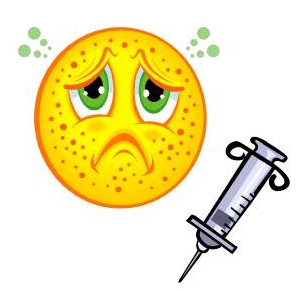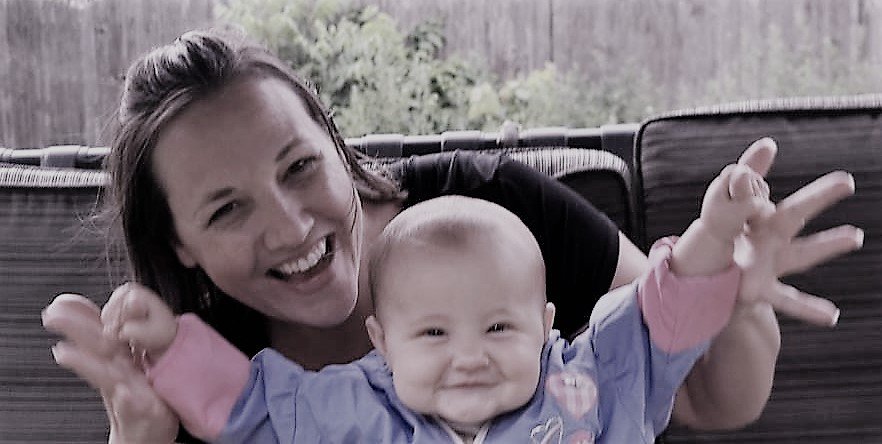Varicella Vaccine Controversy
Are Chickenpox Good for the Herd?
August 31, 2012
The varicella vaccine has now joined the ranks of the vaccine controversy with full force. Otherwise known as the chickenpox vaccine, the varicella vaccine is currently part of the CDC’s recommended vaccine schedule - with doses recommended once at 12-15 months of age, and again at 4-6 years old.
First, the vaccine seems to highlight the profit motivations of the pharmaceutical industry by creating a vaccine against a childhood infection that is generally perceived as benign. The CDC tells us that since the vaccine’s approval in 1995, hospitalizations and deaths from the chickenpox have decreased “dramatically in the United States.” However, the CDC does not give any specific numbers regarding the dramatic reduction.
Now, studies are emerging that suggest that the chickenpox vaccine may do more harm than good, by increasing the population’s susceptibility to shingles, a related disease that carries far more potential for complications.

Chickenpox is a viral infection that causes itchy blisters all over the body. The disease is airborne, and therefore, highly contagious. Infected persons are contagious 2 days before the outbreak of symptoms, and remain contagious through the acute phase of the illness – approximately 6 more days.
Naturally occurring infection with the chickenpox imparts lifelong immunity. As such, prior to the introduction of the chickenpox vaccine in 1995, approximately 95% of the adult population carried immunity to chickenpox because they had contracted it previously, usually as children.
Introduction of a chickenpox vaccine by Merck in 1995 has surely lowered the incidence of this disease, but it has affected the natural balance in distinct ways. In fact, a critical analysis of the effectiveness of this vaccine was recently published in which a closed population of a Los Angeles district was evaluated over 10 years.
What Researchers Did
The review published in the journal Vaccine focuses on the results of Antelope Valley Varicella Active Surveillance Project (AV-VASP), conducted by Los Angeles Department of Health Services and funded by the CDC. The review is authored by a Research Analyst, Gary S. Goldman, PhD, who overlooked the project from 1995-2002. It is worth noting that Dr. Goldman later left the project when disagreements over publication of results surfaced. The views of this review are not shared by the CDC or the LA Health Department.
The cases of varicella infection were reported from 3000 different units based in the Antelope Valley of Los Angles, California with a population of 300,000 residents. The specifics of a positive chickenpox case was collected over a telephone interview that focused on collecting demographics, clinical symptoms and data pertaining to impact of the disease on social life of the infected and his/her guardians. The surveillance of childhood shingles cases was included in 2000. It was only in 2005 that the survey of adult shingles was taken in consideration with skilled nursing facilities, dermatology practices, and internal medicine practices. Therefore we can expect a significant underestimation of shingles figures prior to this inclusion.
What the Research Shows
This review highlights several important points for the overall effectiveness, and the risk versus benefit from the varicella vaccine program. The results have provided fuel for the vaccine controversy.
First, varicella vaccination does not provide lifelong immunity like naturally occurring chickenpox infection. In 2001, varicella vaccine efficacy dropped below 80%, with more than 20% of people who had been vaccinated catching the disease. Therefore, in 2007, a booster shot was added to the vaccine schedule for children ages 4-6. It is possible that booster shots will be required throughout life in order to maintain immunity.
Second, removing the natural exposure of chickenpox from the environment reduced natural immunity to shingles. Herpes Zoster, otherwise known as shingles is a virus closely related to chickenpox. Individuals who have previously had chickenpox are at risk for shingles. In theory, constant exposure to chickenpox in the environment boosts natural immunity to both chickenpox and shingles, thereby reducing the number of shingles outbreaks when chickenpox is active in an area. Therefore, the vaccine controversy is more complicated than just shingles, and this review reports a statistically significant 28.5% increase in shingles just between 2000 and 2001 in people 20-69 years old. By 2000, approximately 50% of children under the age of 10 had been vaccinated, which is considered moderate vaccine coverage.
A significant decline of 80% was seen in chickenpox cases in the period of 1995-1999. The author attributes the fall observed in 1996-97 to the seasonal cycle of decline in the virus replication rather than an effect of early vaccination. Supporting his argument, the study saw a relative rise in the number of positive cases in the year of 2000, as compared to the earlier years of survey.
Children who had previously had chickenpox had the highest rates of shingles diagnoses in history between 2000 and 2003, following widespread vaccine use. In the Antelope Valley, the crude incidence rate of shingles prior to the vaccination program was roughly 0.72 cases per 1000 children (0.072%). The actual incidence rate of shingles after the vaccination began was 1.45 per 1000 children with a previous history of chickenpox (0.145%) – a doubling of shingles incidence among children. Shingles was previously considered a disease that primarily affected the elderly and immune compromised.
The review asserts that reactivation of latent varicella infection in the form of shingles in the society as a whole leads to costs that are 4-5 times higher as compared to a primary chickenpox disease. In addition, monetary costs of the vaccine program itself, and the rare adverse reactions to the vaccine itself must be considered.
The Big Picture
It is a well-established hypothesis that periodic exposures to varicella boosts immunity of an individual against shingles - a concept referred to as the Hope-Simpson hypothesis. Widespread vaccination against chickenpox in the Antelope Valley lead to a more than 70% decline in the incidence of chickenpox; thereby the chickenpox vaccine indirectly increased susceptibility to shingles.
The universal varicella vaccination program has resulted in increasing shingles incidence; it is highly likely that if the trend continues deaths by shingles will multiply. Adults with shingles have a 20 times higher mortality rate than a child who naturally develops chickenpox. Not coincidentally, in 2007, the CDC recommended a shingles vaccination in adults above 60 years of age.
Before the varicella vaccination program began (in 1995), 95% of the children falling in the age group of 12 months to 12 years experienced a natural chickenpox infection. The varicella vaccination provides protection against a primary varicella infection and has reduced its incidence by 70-90%, but it has also eliminated lifelong immunity, and removed persistent exposure from the environment. As a result, vaccine efficacy has declined to less than 80% without boosters, and susceptibility to shingles has increased. Shingles is not only more expensive in terms of medical costs than chickenpox, but also has more chances of complications.
The crux of chickenpox vaccine controversy is whether to protect children from an episode of chickenpox that rarely complicates (1 in 100 chickenpox infections show complications), or to put them at a higher risk of contracting shingles, which was not a childhood disease in the pre-vaccination era, and has a history of manifesting dangerous complications.
A vaccine’s efficacy must be judged by a cost-benefit analysis, and that is where the varicella vaccination program falls short.
Many who participate in the vaccine controversy advocate vaccines as a benefit for “the herd.” That is, we vaccinate everyone so that the weakest will not be exposed to disease (the infants, immune compromised, and elderly). In this case, vaccination appears to be detrimental for “the herd” by increasing susceptibility to a more dangerous disease - shingles - in society at large.
In addition, an individual is committed to a potential lifelong vaccine regimen in order to maintain immunity.
Have you and/or your children had chickenpox? How long did it take for the disease to resolve, and how difficult was it for you and your child? Does this affect your view of the vaccine controversy? Share with us in the comments below…
References:
Goldman GS, King PG. “Review of the United States universal varicella vaccination program: Herpes zoster incidence rates, cost-effectiveness, and vaccine efficacy based primarily on the Antelope Valley Varicella Active Surveillance Project data.” Vaccine. Jun 2012. Epub ahead of print.
Return to Current Science News from Varicella Vaccine Controversy
Go to The Science of Natural Health Homepage from Varicella Vaccine Controversy
Note: This page may contain
affiliate links. You get the great product that I would recommend
anyway at the normal price, and I get a few pennies to to support my
love for Sharing the Science. You can check out my Privacy Policy, too.
I'm Zara, PhD
Hello. I'm a neurobiologist turned mother and business owner, sharing the science of natural health and putting it into practice. More...




New! Leave a Comment